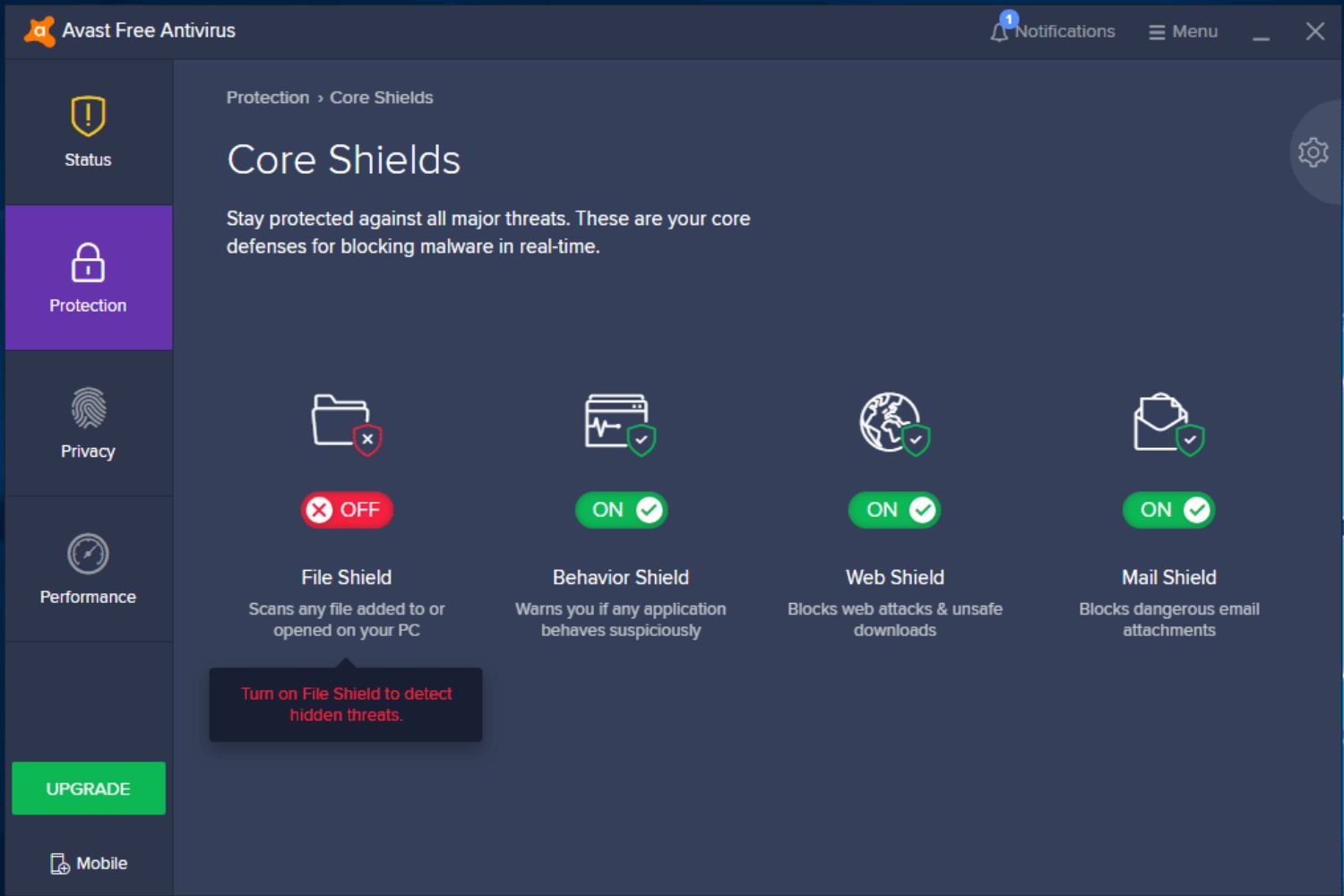Introduction
Welcome to the digital age, where the sharing of files has become easier and more widespread than ever before. One of the most popular methods of file sharing is through Peer-to-Peer (P2P) networks. P2P file sharing has revolutionized the way we exchange data, enabling users from all over the world to connect and share files directly with one another.
P2P file sharing differs from traditional file sharing methods as it eliminates the need for a centralized server. Instead, it allows users to connect directly to each other’s computers, creating a decentralized network where files can be shared and downloaded seamlessly.
In this article, we’ll delve into the world of P2P file sharing, exploring how it works, its advantages and disadvantages, popular networks, legal aspects, and safety concerns. By understanding the ins and outs of P2P file sharing, you’ll be equipped with the knowledge to make informed decisions when it comes to sharing files in the digital realm.
So, whether you’re a tech enthusiast, an avid downloader, or simply curious about the inner workings of the internet, let’s dive into the fascinating world of P2P file sharing!
What is P2P File Sharing?
Peer-to-Peer (P2P) file sharing is a method of sharing files between individual users without relying on a centralized server. It allows users to connect directly to each other’s computers to exchange files, bypassing the need for a middleman. In a P2P network, every participating computer, known as a peer, can act as both a provider and a downloader of files.
Unlike traditional file sharing methods where files are stored on a central server and users download them from that server, P2P file sharing creates a decentralized network. When a user wants to download a file, they connect to the P2P network and search for available sources that have the desired file. The file is then downloaded in fragments from multiple sources simultaneously, making the process faster and more efficient.
P2P file sharing has gained immense popularity due to its ability to facilitate the sharing of large files, such as music, movies, software, and documents, among a large number of users. It has empowered individuals to have greater control over the files they share and the content they access, without relying on centralized authorities.
Sharing files through P2P networks is not limited to specific file types or sizes. Users can share documents, images, videos, music, and any other type of digital file. This flexibility has made P2P file sharing a versatile tool that is used for personal, educational, and professional purposes.
It’s important to note that P2P file sharing is not limited to legal or authorized sharing. While there are many legitimate uses of P2P file sharing, such as sharing open-source software or public domain content, there is also the potential for copyright infringement, piracy, and the sharing of illegal or malicious content.
In the next section, we’ll explore the technical aspects of how P2P file sharing works and the advantages it offers to users.
How Does P2P File Sharing Work?
P2P file sharing operates on a simple principle: users share and download files directly from one another’s computers, creating a network of peers. Let’s take a closer look at the technical aspects of how P2P file sharing works.
1. Discovery: When a user wants to find a specific file, they connect to the P2P network and initiate a search. The search query is sent to all the connected peers in the network.
2. Indexing: The peers in the network maintain an index of the files they are willing to share. This index, also known as the distributed hash table (DHT), contains information such as the file name, size, and the unique identifier of the peer.
3. Connection: Once the search query reaches the peers, they check their local index to determine if they have the requested file. If a peer has the file, they respond to the search query and establish a direct connection with the requesting peer.
4. File Transfer: The file is divided into smaller parts or “chunks.” These chunks are then transferred simultaneously from different peers that have the file. This process, known as multi-source downloading, allows for faster and more efficient file transfers.
5. Piece Verification: As the file is being downloaded, each chunk is verified to ensure its integrity. If a chunk is found to be corrupted or incomplete, the requesting peer sends a request to a different peer for that particular chunk.
6. Sharing Ratio: Once a user has finished downloading a file, they can continue to share it with other peers in the network. This concept is known as “seeding” and helps maintain a healthy balance of upload and download traffic among peers.
It’s worth noting that P2P file sharing is a continuous and dynamic process. Peers join and leave the network regularly, making it a self-organizing system. The availability and speed of file downloads depend on the number of peers sharing the file and their connection speed.
Overall, P2P file sharing revolutionized the way files are shared by empowering individual users to become both providers and downloaders. It creates a network of interconnected peers, facilitating faster and more efficient file transfers. However, it is essential to be mindful of the legal and security implications associated with P2P file sharing, as we will explore in the upcoming sections.
Advantages of P2P File Sharing
P2P file sharing has gained popularity for several reasons, offering numerous advantages to users. Let’s explore some of the key benefits of utilizing P2P file sharing networks.
1. Decentralization: P2P file sharing eliminates the need for a central server, allowing users to connect directly to each other’s computers. This decentralized approach promotes independence, as users are not reliant on a single entity for file sharing.
2. Increased Efficiency: P2P file sharing makes use of multi-source downloading, allowing files to be downloaded from multiple peers simultaneously. This significantly improves download speeds, especially for large files, as the load is distributed across different sources.
3. Wider Availability of Files: With P2P file sharing, users can access a vast range of files that might not be available through traditional distribution methods. P2P networks often host a wide variety of content, including rare or hard-to-find files that may not be readily accessible elsewhere.
4. Faster Downloads: As files are simultaneously downloaded from multiple sources, P2P file sharing generally results in faster download speeds compared to traditional methods. The presence of multiple sources ensures that the download process is not slowed down by limitations of a single server.
5. Reduced Bandwidth Costs for Content Providers: Content providers can benefit from P2P file sharing as it offloads the bandwidth costs of serving popular files to the users themselves. By allowing users to share the files they download, the burden of bandwidth costs is distributed among the peers, reducing costs for the original content provider.
6. Promotes Collaboration and Data Sharing: P2P file sharing encourages collaboration and the exchange of information between individuals and groups. It enables easy sharing of documents, research papers, and other files necessary for teamwork and collaboration on projects.
7. Inclusive and Accessible: P2P file sharing networks have a low barrier to entry, allowing anyone with an internet connection to participate. This inclusiveness promotes the sharing and distribution of knowledge, culture, and creativity among a diverse community of users.
While P2P file sharing offers significant advantages, it’s important to consider the legal and security aspects associated with this technology. We will discuss these aspects in detail in the upcoming sections.
Disadvantages of P2P File Sharing
While P2P file sharing offers many benefits, it also comes with its fair share of disadvantages and risks. Let’s explore some of the key drawbacks associated with P2P file sharing.
1. Copyright Infringement: P2P file sharing has been associated with copyright infringement and piracy. Users may unknowingly or intentionally share copyrighted material without the proper authorization. This can have legal consequences and negatively impact content creators and copyright holders.
2. Risk of Malware and Viruses: P2P networks can be breeding grounds for malware, viruses, and other malicious software. Since files are shared directly between users, there is a higher risk of downloading infected files, which can compromise the security of your computer and personal data.
3. Lack of Quality Control: P2P networks do not have strict quality control mechanisms in place. This can lead to the spread of low-quality or fake files, resulting in wasted time and bandwidth for users who download them.
4. Privacy Concerns: P2P file sharing involves sharing files directly with other users, which can raise privacy concerns. Your IP address, files, and browsing activity are exposed to other peers in the network, potentially compromising your privacy and making you vulnerable to surveillance.
5. Unreliable Downloads: P2P networks rely on the availability and willingness of peers to share files. If there are limited sources or if the sources have a slow internet connection, it can result in slow or unreliable downloads.
6. Bandwidth Limitations: P2P file sharing consumes significant bandwidth both for uploading and downloading files. This can lead to bandwidth limitations and slower internet speeds for other activities, especially if you have a limited or capped internet connection.
7. Legal Risks: Engaging in P2P file sharing exposes users to potential legal risks, especially when it comes to copyright infringement. Copyright holders actively monitor P2P networks and may take legal action against individuals found to be sharing copyrighted materials unlawfully.
It’s important to weigh these disadvantages and risks when deciding to participate in P2P file sharing. Understanding and mitigating these potential drawbacks can help ensure a safer and more responsible approach to file sharing.
Popular P2P File Sharing Networks
Over the years, several P2P file sharing networks have gained popularity and have become household names among internet users. Let’s take a look at some of the most popular P2P file sharing networks:
1. BitTorrent: BitTorrent is one of the most widely used P2P file sharing protocols. It allows users to download and share files by connecting to a decentralized network of peers. BitTorrent is known for its efficient and fast file transfer capabilities, thanks to its ability to download files from multiple sources simultaneously.
2. eDonkey: eDonkey is another popular P2P network that allows users to share and download various types of files. It uses the eDonkey2000 protocol and relies on a decentralized network of servers and users to facilitate file transfers.
3. Gnutella: Gnutella is an open-source P2P network that gained popularity in the early years of file sharing. It operates on a decentralized network where participants can search for and download files directly from other users’ computers.
4. Emule: Emule is a client for the eDonkey and Kad networks, providing a user-friendly interface for P2P file sharing. It supports features such as file searching, downloading, and sharing, as well as offering a vast library of files shared by other users.
5. Kazaa: Back in the early 2000s, Kazaa was one of the most popular P2P file sharing networks. It allowed users to search, download, and share files using the FastTrack protocol. However, Kazaa faced legal challenges due to copyright infringement concerns and eventually shut down.
6. LimeWire: LimeWire was a widely used P2P file sharing client that operated on the Gnutella network. It offered a simple and intuitive interface for users to search and download files. However, similar to Kazaa, LimeWire faced legal battles and was eventually forced to shut down.
7. Ares: Ares is a free and open-source P2P file sharing program that supports a wide range of files, including music, videos, software, and documents. It operates on its own network and offers features such as chat rooms and a built-in media player.
While the popularity and availability of P2P file sharing networks may vary over time, these examples represent some of the well-known P2P networks that have played a significant role in shaping the file-sharing landscape on the internet.
Legal Aspects of P2P File Sharing
P2P file sharing has long been a subject of legal scrutiny due to concerns surrounding copyright infringement and the unauthorized sharing of protected content. While P2P technology itself is not inherently illegal, the way it is used can determine its legality. Let’s explore the legal aspects of P2P file sharing.
1. Copyright Laws: P2P file sharing can potentially violate copyright laws when users share copyrighted materials without the proper authorization from the copyright holder. Uploading or downloading copyrighted movies, music, software, or other protected works without permission can result in legal consequences.
2. Legal Alternatives: There are legal alternatives for P2P file sharing, such as sharing open-source software, public domain content, or files for which the copyright holder has given permission. It’s important to ensure that the files being shared are legally obtained or authorized for sharing.
3. Digital Millennium Copyright Act (DMCA): In the United States, the DMCA is a law that provides copyright protections and regulates the sharing of copyrighted materials. The DMCA allows copyright holders to issue takedown notices to P2P network operators or users who are infringing on their rights.
4. International Laws and Treaties: Copyright laws and regulations vary across countries, and international treaties, such as the Berne Convention, provide guidelines for the protection of intellectual property rights. It’s important to be aware of and comply with the copyright laws applicable in your jurisdiction.
5. Legal Actions and Consequences: Copyright holders actively monitor P2P networks for illegal file sharing. When copyright infringement is detected, legal actions can be taken against individuals involved, ranging from receiving warning notices and fines to facing civil lawsuits for damages.
6. Fair Use and Creative Commons: Some exceptions to copyright laws, such as fair use and Creative Commons licenses, allow for limited use and sharing of copyrighted materials under certain circumstances. It’s crucial to understand and respect these exceptions when engaging in P2P file sharing.
It’s important to note that the legality of P2P file sharing can vary depending on the specifics of each case and the jurisdiction in which you reside. It is advisable to consult with legal professionals or research the copyright laws applicable in your region to ensure compliance and avoid potential legal consequences.
Safety and Security Concerns with P2P File Sharing
While P2P file sharing offers convenience and access to a vast array of files, it also comes with inherent safety and security concerns. Let’s explore some of the key issues to be aware of when engaging in P2P file sharing.
1. Malware and Viruses: P2P networks can be a breeding ground for malware and viruses. Since files are shared directly between users, there is an increased risk of downloading infected files that can harm your computer or compromise your personal information. It is crucial to have reliable anti-malware software and exercise caution when downloading files from unknown sources.
2. Privacy Risks: When participating in P2P file sharing, your IP address and other identifying information are exposed to other peers in the network. This can make you vulnerable to surveillance, hacking attempts, and potential privacy breaches. It’s essential to use tools that protect your privacy, such as anonymizing software or virtual private networks (VPNs).
3. Data Integrity: Files downloaded through P2P networks may not always be reliable or accurate. It’s common for files to be mislabeled, incomplete, or of low quality. Users should exercise caution and verify file integrity before opening or executing downloaded files to avoid potential data corruption or security risks.
4. Untrusted Sources: With P2P file sharing, users can download files from other individuals, including strangers. There is a risk of downloading files from untrusted sources, which may contain inappropriate, illegal, or malicious content. It’s important to exercise discretion and only download files from reputable sources or those with a positive reputation within the P2P community.
5. Network Vulnerabilities: P2P networks can be susceptible to network vulnerabilities, such as man-in-the-middle attacks or distributed denial-of-service (DDoS) attacks. These vulnerabilities can potentially compromise the security of your computer or disrupt your internet connectivity. Keeping your security software up to date and utilizing firewalls can help mitigate these risks.
6. Legal Risks: Participating in P2P file sharing, especially when involving copyrighted material, can expose users to legal risks, as discussed in the previous section. It’s essential to be aware of copyright laws and the potential consequences of infringing upon those laws.
By understanding and addressing these safety and security concerns associated with P2P file sharing, users can take appropriate measures to protect their devices, personal information, and online privacy.
Tips for Using P2P File Sharing Safely
While P2P file sharing can be a convenient way to access a wide range of files, it’s crucial to prioritize safety and security. By following these tips, you can reduce the risks and enhance your safety while engaging in P2P file sharing:
1. Use Trusted P2P Software: Stick to well-known and reputable P2P software that has a track record for prioritizing the safety and security of its users. Ensure that you are downloading the software from the official and verified sources.
2. Install and Update Security Software: Use reliable anti-malware and antivirus software to protect your computer from potential threats. Keep the security software up to date to ensure the latest definitions for identifying and mitigating malicious files.
3. Verify File Integrity: Before opening or executing downloaded files, verify their integrity using file checksums or reputable file verification tools. This will help ensure that the files have not been tampered with or corrupted during the download process.
4. Be Cautious with Unknown Sources: Exercise caution when downloading files from unknown sources. Stick to trusted and reputable sources within the P2P community for a higher assurance of file quality and safety. Read user reviews and ratings to determine the reliability of the source.
5. Protect Your Privacy: Use tools like virtual private networks (VPNs) to encrypt your internet connection and mask your IP address. This adds an additional layer of privacy and security, making it harder for third parties to monitor your online activities.
6. Be Mindful of Copyright Laws: Familiarize yourself with copyright laws in your jurisdiction and respect the intellectual property rights of others. Avoid downloading or sharing copyrighted material without proper authorization or licensing.
7. Regularly Update Your System: Keep your operating system, web browser, and other software up to date with the latest security patches and updates. This helps protect your system from known vulnerabilities that can be exploited by malicious actors.
8. Use a Firewall: Enable and configure a firewall on your computer to regulate incoming and outgoing network traffic. This helps prevent unauthorized access and can alert you to potential threats or suspicious activity.
9. Exercise Common Sense: Lastly, exercise common sense when engaging in P2P file sharing. Be cautious of files that seem too good to be true or sources that appear suspicious. Avoid sharing personal information or engaging in any activity that compromises your privacy or security.
By following these tips and maintaining a proactive approach to your online safety and security, you can enjoy the benefits of P2P file sharing while minimizing the risks associated with it.
Conclusion
Peer-to-Peer (P2P) file sharing has revolutionized the way we share and access files. By connecting users directly to one another’s computers, P2P technology enables efficient and decentralized file transfers. However, it’s important to navigate the world of P2P file sharing responsibly and securely.
In this article, we explored the fundamentals of P2P file sharing, including how it works and its advantages. We also discussed the potential disadvantages, such as copyright infringement and security risks. Understanding the legal aspects surrounding P2P file sharing, as well as taking safety precautions, is essential for a positive and secure file sharing experience.
It’s crucial to remember that P2P file sharing is a powerful tool that offers tremendous benefits, but it also comes with a level of responsibility. By adhering to copyright laws, being cautious with downloaded files, and implementing security measures, you can mitigate risks and protect your privacy and digital well-being.
Ultimately, P2P file sharing has transformed the way we exchange information and fostered a sense of collaboration and knowledge sharing. By using P2P networks responsibly and in compliance with legal regulations, we can continue to leverage the advantages of this technology while safeguarding ourselves and respecting the rights of others.

























